Breaking Barriers: Sheet Processor Makes Move on High-End Packaging Market
Impact Plastics sets up new brand with game-changing disruptive technology that combines a novel PP with customized equipment that looks to upend the business of extruded sheet for barrier food packaging.
Impact Plastics has made “pivots”—the word used by company president David Kingeter—before. It was founded in the late 1960s in Putnam, Conn., as a “soup-to-nuts” custom sheet extruder. It pivoted with a new plant in Hamlet, N.C., about 15 years ago, with a focus on producing tight-tolerance, thin-gauge sheet for food, medical and other value added end-markets (see Jan. ’18 feature). Kingeter says that effort was part of the company’s “pursuit of the perfect gauge.” But its most recent effort to identify new growth areas, in the works for more than two years, is more than just a shift. Indeed, it holds the promise of making the industry think of barrier sheet packaging in a completely different way.
To hear Kingeter tell it, innovation in barrier packaging has proceeded at a snail’s pace for decades. Brand owners are under enormous pressure from environmentally conscious consumers, retail chains, and government legislation, and thus have set aggressive target dates to roll out more sustainable products as early as 2022. The trouble is, according to Kingeter, that the solutions proffered by their processor and converter suppliers are based on legacy technology in place for 20 years or more. “Some brand owners have come to realize that they are stuck inside of a box,” Kingeter says. “We’ve created the opening to get them out of the box ... now.”
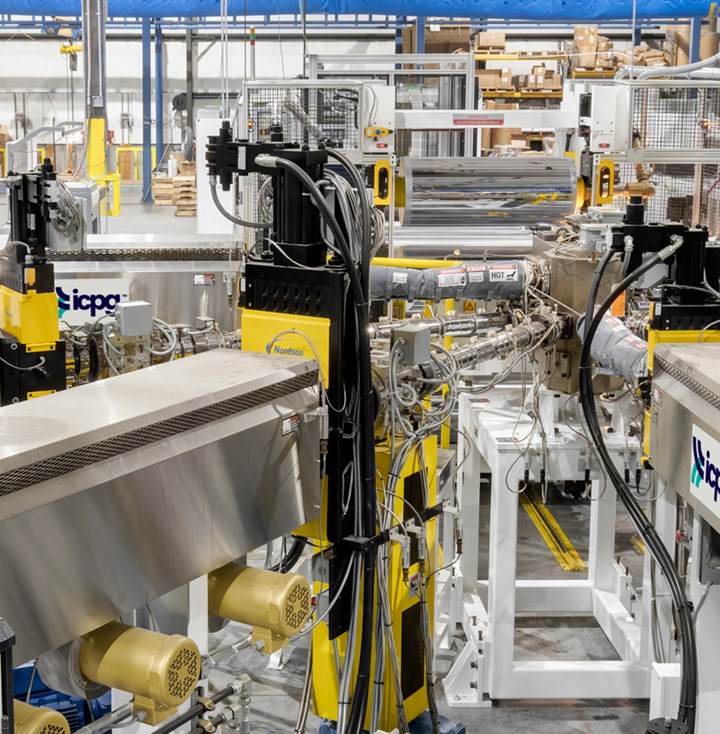
and EVOH.
That opening comes in the form of Impact Consumer Products Group (ICPG), in which the company has invested $10 million over the last two-plus years as part of a projected $50 million spend to get the brand running full throttle (icpg.co). It has added 110,000 ft2 to its Hamlet facility, equipped it with a state-of-the-art laboratory, and late last year commissioned a highly proprietary, multilayer sheet extrusion line equipped with a die/feedblock package, highly sophisticated precision feeding technology, and a proprietary gauging system called visionX that utilizes electromagnetic technology to provide high-speed (3000 datapoints/min) continuous, real-time measurement of the thickness of each individual layer of a structure.
“The visionX system offers enhanced quality and precision for our customers, to ensure consistency, accuracy and barrier performance across production runs,” explains Jonathan Cage, director of business development. “It allows for material optimization, so we can hone in on the barrier requirements and eliminate the need to over-engineer structures, controlling both cost and material usage and offering opportunities for downgauging and lightweighting of existing structures. And by extension, this system also offers enhanced sustainability, so structures are not using more materials than is required, a concept that has become increasingly more important as brand owners strive to reduce the percentage of virgin materials used in their packaging solutions.”
“Some brand owners have come to realize that they are stuck inside of a box,” We’ve created the opening to get them out of the box ... now.”
While the line is set up to run a variety of resins—including PP, PE, PS, and EVOH—ICPG believes the future in barrier sheet packaging will be based on PP. To that end, it has developed a proprietary material, called XPP Enhanced Barrier Polypropylene, with enhancements to oxygen and moisture-vapor barrier properties, that in some cases will reduce or eliminate the need to add addition barrier materials such as EVOH, which may disrupt the recycling stream. At the same time, this new barrier PP sheet can be run as thin as 15 mils, far below the industry standard of 45 to 48 mil. “This is a ‘new-world’ PP,” Kingeter says. “The world is changing, brand owners are looking for sustainable solutions, and processors are tied to existing structures because they are operating within existing technology.”
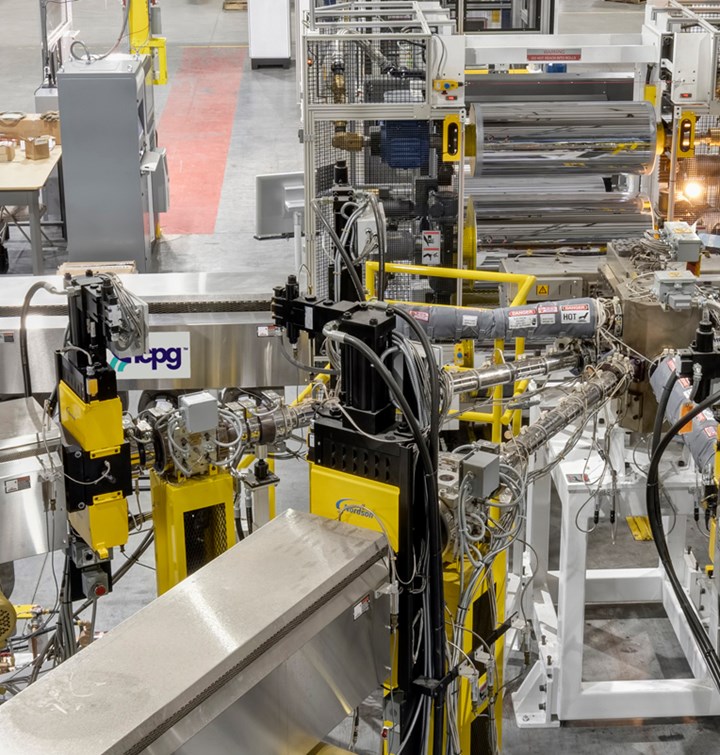
Adds Cage, “Consumers do not want to give up convenience, while the brand owners are pushing for packaging solutions that meet their goals for sustainability and recycling. Our barrier packaging will be recyclable and, because less material is being used, it also helps to satisfy the sustainability goals of many brand owners to reduce the amount of plastics used in their packaging solutions.” Adds Kingeter, “We’re bringing to the market game-changing technology that enables the customer to extend shelf life with the power of an innovative new PP with inherent barrier properties, and also reduce gauge. If the application requires even longer shelf life, we can precisely feed as little as a half-mil of EVOH to achieve that while not compromising the base material so that it won’t have to go into the ‘other’ recycling stream.”
In addition to bricks and mortar and machinery, Kingeter has added to the ICPG team a number of well-known, established executives with roots in polymer science, barrier extrusion and flexible and rigid packaging. These include Michael Moren, ICPG’s commercial director; and Cage. The two combined have more than 60 years of experience in developing high-barrier, extended-shelf-life packaging.
Other notable members of the ICPG team include Loren Temple, operations and engineering manager, who for more than 28 years has focused on engineering, lean manufacturing and thermoforming process and design. Newcomer Jimmy Shah, senior R&D engineer, has expertise in sheet extrusion and thermal lamination for food packaging, with a focus on optimization of product and process, R&D and new-product development.
Kingeter explains how things came together. “Impact Plastics was looking to expand and was exploring various growth avenues. We have always maintained a narrow focus within the custom sheet extrusion industry, with a primary focus on value-added, thin-gauge, custom-extruded sheet and rollstock for food and medical packaging, so it made sense that any expansion would involve growth into one of those two areas.”

David Kingeter, Impact Plastics president.
He recalls that he met Moren through a mutual connection, and began to talk about the gap that they perceived in the barrier food-packaging industry for custom, high-quality, innovative and sustainable solutions for extended-shelf-life food packaging. “As a value-add process and product, this made sense as an extension to our current business model. From there the wheels were set in motion and we began working with equipment suppliers to develop the multilayer coextrusion line and recruiting the team for ICPG.”
Says Moren, “As the vision for ICPG was taking life, one concept that remained at the forefront of all discussions was creating a truly custom experience and solution for our customer base. We felt that there was a need not being met in the industry for customization and innovation within the extended-shelf-life food-packaging industry, and that brand owners were having their creativity and desire for change limited by currently available options. Additionally, brand owners were desperately seeking more sustainable solutions for packaging materials but were met with alternatives that cost more and did not deliver from a processing standpoint.
“We wanted to differentiate ourselves with a product that has never been brought to this market before. We had our ‘Ah-ha’ moment: What if we could develop a solution that maintained all the positive attributes of today’s extended-shelf-life barrier packaging—processability, barrier protection, convenience, quality and cost—but with new formulations and technologies that yielded a more sustainable product and did not require the replacement of billions of dollars of consumer- and processor-owned systems?”
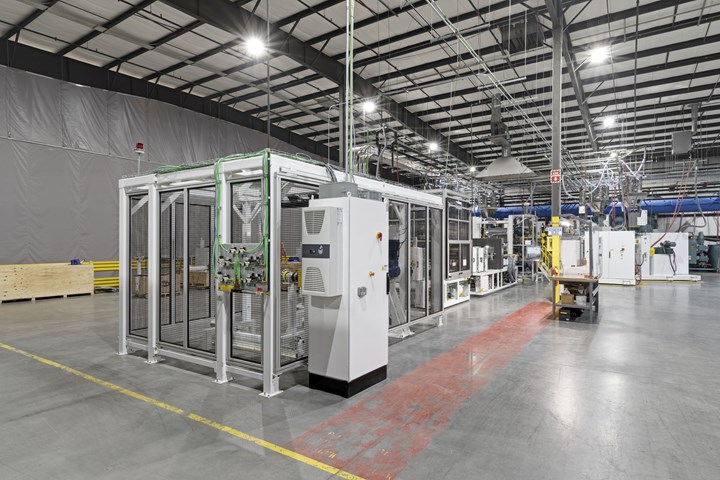
Natalie MacVarish, who is Kingeter’s daughter and part of the family-owned business as director of marketing, says the ICPG-developed XPP Enhanced Barrier offers an 80% improvement in OTR and MVTR vs. traditional PP; and a 90% improvement in OTR and 80% improvement in MVTR vs. PS, even without any EVOH. ICPG PP-based sheet can generally be dropped into existing thermoforming and form-fill-seal (FFS) applications with minimal (and sometimes no) equipment or tooling modifications. Its enhanced properties are said help overcome challenges typically associated with PP in FFS and thermoforming processes: It offers controlled shrinkage and flex-modulus/stiffness improvements that mirror or exceed the ‘snapability’ and ‘scorability’ of PS, allowing for compatibility with form-fill-seal processes, and making it what ICPG believes is the first true PP-based replacement for PS in rigid FFS.
“We’re making an offering to brand owners and they are taking it seriously because consumers are calling for it.”
Moren adds, “There have been a number of great ideas to improve packaging sustainability, but they always come at a cost premium. We realized that in order to make a product that was a truly viable solution for the market, it had to make sense from a cost perspective. So we developed a solution that achieves all of the other necessary benefits but makes economic sense. We offer simplified structures with enhanced recycling attributes that can be recycled as a Number 5 (PP) vs. Number 7 (Other). Moreover, as a result of California’s Proposition 65, brand owners are looking for a PS replacement that will perform and function similar to PS, but allow for enhanced sustainability and alleviate consumer health and safety concerns.”
Notes Kingeter, “We view our solution as a three-legged stool: It offers sustainability; it fits nicely with the thermoforming and FFS processability concerns of our customers upstream; and there are excellent economics associated with this innovation. We have seen brand owners save $2 million to $4 million moving from PS to PP on one application alone. We have had brand owners come to us already. Some think this is too good to be true. But we checked all the boxes: Saved them money, extended shelf life, out of Prop 65, 100% recyclable. We’re making an offering to brand owners and they are taking it seriously because consumers are calling for it.”
Being an entrepreneur that can respond quickly to changing demands has been advantageous to Impact Plastics as it seeks to fill a void in the high-end packaging marketplace. States Kingeter, “We made a commitment to this market without having one brand owner signing up in advance. You’re never going to get that at a huge processor. Those processors have great people too, and they come up with great ideas. But lots of times these ideas are sent to the storage room as long as the company is making money. They perpetuate this to the brand owners.”

Kingeter says the installation of the first sheet line is step one in the process of delivering PP-based barrier-packaging solutions to brand owners. Because the packaging market doesn’t typically move quickly to change materials and structures, ICPG’s first coextrusion line has built-in flexibility to process resins beyond PP.
“But we have expectations to have five new lines. On the next one, we might decide to engineer it specifically for higher-volume applications, whether it’s creamers, yogurt, baby food, or something else. And we are working on a number of innovative development projects: a bio-based PP and also a new extruded hemp/PP product.”
Impact Plastics expects to have its process patented by mid-August. It is also looking at licensing its technology.
Related Content
US Merchants Makes its Mark in Injection Molding
In less than a decade in injection molding, US Merchants has acquired hundreds of machines spread across facilities in California, Texas, Virginia and Arizona, with even more growth coming.
Read MoreInjection Molder Bases Company Culture on Employee Empowerment
After more than two decades in the industry, Rodney Davenport was given the opportunity to create an injection molding operation in his own vision, and — in keeping with the product he was making — to do so from the ground up.
Read MoreEvolving Opportunities for Ambitious Plastics Recycler
St. Joseph Plastics grew from a simple grinding operation and now pursues growing markets in recycled PP, food-grade recycled materials, and customized post-industrial and post-consumer compounds.
Read MoreInside the Florida Recycler Gearing Up to Take on Scrap at NPE2024
Hundreds of tons of demonstration products will be created at NPE2024 next spring. Commercial Plastics Recycling strives to recycle all of it.
Read MoreRead Next
Making an Impact In Thin-Gauge Sheet
Creating a ‘virtually integrated supply chain’ that connects it with suppliers and customers has helped Impact Plastics add value to a wide range of sheet products, with a growing emphasis on PP.
Read MorePeople 4.0 – How to Get Buy-In from Your Staff for Industry 4.0 Systems
Implementing a production monitoring system as the foundation of a ‘smart factory’ is about integrating people with new technology as much as it is about integrating machines and computers. Here are tips from a company that has gone through the process.
Read MoreWhy (and What) You Need to Dry
Other than polyolefins, almost every other polymer exhibits some level of polarity and therefore can absorb a certain amount of moisture from the atmosphere. Here’s a look at some of these materials, and what needs to be done to dry them.
Read More













.png;maxWidth=300;quality=90)











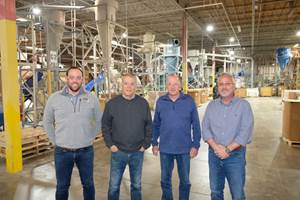
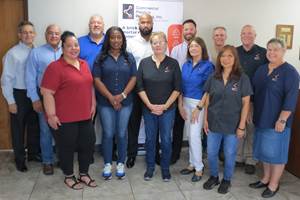
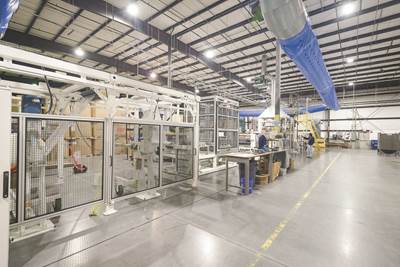


.png;maxWidth=970;quality=90)